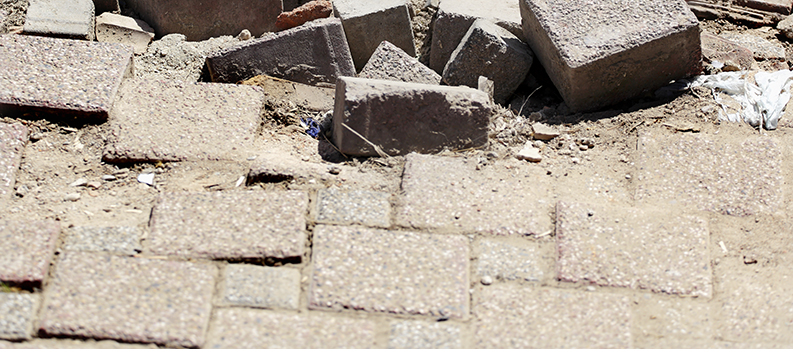Scholars find that elderly fitness is hindered by poorly maintained walking surfaces

Chanam Lee

Sungmin Lee
Uneven walking surfaces, incomplete sidewalks, and broken steps are small matters to most pedestrians — but to the elderly, they can be major barriers that have a significant, negative impact on their overall health, said Chanam Lee, Texas A&M professor in the [Department of Landscape Architecture and Urban Planning] (http://laup.arch.tamu.edu/) .
Lee is part of a team of scholars that published its [findings] (https://www.ncbi.nlm.nih.gov/pubmed/31487783) on the topic in a September 2019 edition of the International Journal of Environmental Research and Public Health.
“Our study found that older pedestrians were more likely to fall when they encounter substandard walking surfaces,” said Lee. “After a fall, the elderly tend to have ongoing restricted outdoor mobility, decreased physical activity, social withdrawal and a loss of confidence.”
The project’s findings suggest that safe, well-maintained outdoor environments may help prevent falls and encourage older adults to engage in social activities, she said.
“Physicians should be aware of older patients’ environments and take them into account when recommending increased exercise,” said Lee. “Also, family members can help prevent falls by cautiously monitoring outdoor environments.”
Urban planning and city works departments can also help by promoting safe neighborhoods and maintaining the quality of sidewalks and street surfaces, said Lee.
She conducted the study with collaborators Sungmin Lee, an assistant professor of plant science and landscape architecture at the University of Connecticut who earned a [Ph.D. in Urban and Regional Sciences] (https://laup.arch.tamu.edu/academics/graduate/ursc/) at Texas A&M in 2017, and Marcia Ory, director of the Texas A&M [Center for Population Health & Aging] (https://cpha.tamhsc.edu/) .
Richard Nira
rnira@arch.tamu.edu
Tags
- archone gallery
- coa gallery
- interdisciplinary
- landscape architecture & urban planning
- laup gallery
- planning
- research
- rss
- transportation
- wellness
Related Posts

Profs studying new transit mode’s effect on walking habits

Oct. 29 symposium spotlights college, faculty research

Oct. 23 symposium spotlighted college, faculty research

Zhu heading physical activity study project
Follow Us
Facebook Twitter Vimeo Youtube Flickr RSS
Recent Posts

Planning prof heads study of disaster housing aid

A message from the dean

Former student remembered as expert planner

Leading educator named new head of Architecture Dept.






_thumbnail_small.png)
